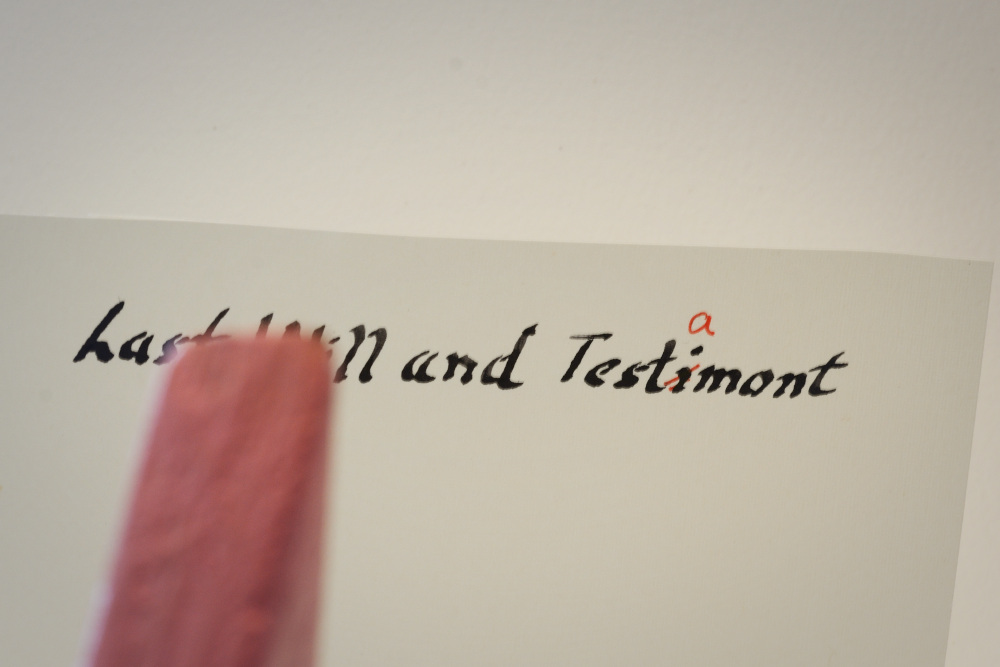Back from several days in San Francisco—celebrating my wedding anniversary, admiring a friend’s potato-shaped dog, meeting with a handful of clients, enjoying the hell out of San Francisco, and generally “checking out” from the daily grind—it’s prime time for another edition of Meg’s Musings.
Technical, Behavioral…and Bureaucratic
In my profession, “real” financial planners know that in order to serve our clients well, we need two kinds of knowledge:
Technical. This is what almost all our education and training is targeted at. How does the tax code work? How much insurance of what kind do you need? Etc. Those letters after my name (CFP®, RICP®)? Those are almost entirely indicative of technical knowledge. You want facts? I got yer facts. Right here.
Behavioral. This is a more recent entrant into the canon of Good Financial Planning, but it’s a growing focus, and at least my entire professional community is on board. This is the work of acknowledging clients’ emotions, and using emotions and behavior to improve their lives and finances. (I also, as it turns out, have letters for this domain of knowledge! I just don’t usually use them. But if you like, you can imagine RLP® after my name. That stands for Registered Life Planner®.)
The longer I practice, and more time the federal government, state governments, and corporations have to “improve” things, the more I believe a third knowledge category deserves acknowledgment:
Bureaucratic. This is the category of knowledge that we must bring to bear when we actually want to implement all the strategic and tactical decisions my clients and I make. And I think it gets more obvious and important every year.
A fantastic example is the knowledge required to roll over an old 401(k). Most clients understand the technical and behavioral merits of doing this. But Oh. My. God. Have you tried to roll a 401(k) to another account at all recently? If you have, maybe you already know what I’m about to say. If you haven’t, just ask your friendly local financial planner.
From inefficient processes (“Really? You have to mail me a check? And then I have to turn around and mail that self-same check to the new 401(k) company?”) to outright mistakes (“What do you mean you deposited my old Roth 401(k) money into my new pre-tax 401(k)?”), it can be a nightmare. I have an entire blog post dedicated to avoiding common 401(k) rollover mistakes.
After years of observing and helping clients roll old 401(k)s into new 401(k)s or IRAs, we’ve accumulated quite a list of tips and tricks to help it happen, perhaps not quickly, but successfully and without giant mistakes.
That is, in my opinion, a tremendous value we financial planners can offer to clients, who might otherwise:
- Not do it at all. Like the client who left their old 401(k) alone for over 10 years, resulting in the money getting sent to the state’s unclaimed property division, whence it is proving extremely difficult to extract it, or
- Do it and something ends up wrong. Like the client whose after-tax/Roth money was deposited in the new 401(k)’s pre-tax account. Don’t worry, we resolved that. or
- Do it, push through all the hurdles, actually do it correctly, but be uncertain and stressed out along the way.
Prior to “retiring” (to be a stay-at-home dad) back in 2016, my husband had worked for several years (as a software programmer) at a company that produced security software. He used to characterize his job—at first jokingly, and increasingly cynically over time—as writing code to undo the effects of the shitty code that other people had already written. Yes…there’s obvious value in undoing badness, but damn, wouldn’t it just be better if the shitty code never existed?
In that same spirit, this Bureaucratic Knowledge is one of those incredibly useful things we financial planners provide…that I really wish we didn’t have to. It’s just getting us back to Net Zero. It’s just undoing the negative value that institutions have created. It’s not creating positive value. But I’m at least glad that we have the expertise to help clients navigate the bureaucratic BS more successfully and less stressfully.
Clarity on what you truly want is a magic unlock. It’s worth (constantly) working on.
As I mentioned at the top, I recently spent several days in San Francisco, where I used to live, pre-children.
I still love San Francisco. I love walking its streets. I love taking MUNI and BART. I love the food (I packed two loaves of Acme bread in my suitcase to take home). I love the staircases and public parks.
And during many of my visits since moving out almost 15 years ago, I used to yearn to live there again. During this recent visit, I found myself enjoying all that San Francisco has to offer, but without that yearning.
I was trying to figure out why my reaction to San Francisco was so purely appreciative this time, not tinged with yearning. It seems linked to another experience I’ve had recently: on various occasions walking around downtown Bellingham (where I live) with either my mom or a daughter, I’ve observed myself feeling deeply contented. So deep and thorough was this contentment that it felt heavy, tangible.
I think I can attribute these pleasures to two things:
- Getting older. I turned 48 earlier this year. Being that 80-year-old woman rocking on the front porch who doesn’t give one sh*t what other people think? #goals I have a working hypothesis that women, much as we are born with all the eggs we’re ever going to have, we are also born with all the f*cks we’re ever going to have. And, as with eggs, we shed those f*cks steadily over our lifetime until arriving at a point when we, ta da! have no more f*cks to give.
- Working explicitly, for years now, to clarify what I truly value, and taking explicit steps to use my time and money to support those things. You know, the answer to, “If I were to die tomorrow, what would I regret that I never did?” And it doesn’t hurt (from this perspective, at least) that I had to deal with a diagnosis of and treatment for Stage 0 breast cancer starting in August 2023; that has a way of focusing one’s attention. 😑
(Yes, I’m also affluent, healthy, lucky, etc. And there are plenty of people who are all those things…and also unhappy.)
In the past few years, I’ve really started prioritizing What Truly Matters to Me over the usual stuff that it’s so easy to fall into. That has meant I finally took my daughters (and my husband) to a long-yearned-for trip to London and Paris. I planned a lot for it. I saved for it over a year or two. I arranged work so that I could really be present on my travel and not constantly peeping back into work. And it. was. amazing. Everything I expected and more.
I better carved time out of my calendar to attend my kids’ track and cross-country meets and other school events. To start working with a personal trainer. I’ve spent more of my money getting together with my brother’s family because his daughter is the only cousin my kids have, and they get along so well.
I’ve started caring less (I still care…just less) about how my business stacks up against other people’s businesses. I decided that my focus was going to be making enough money, serving my clients well, and enjoying the work as best I could (i.e., paying to outsource or delegate the work I didn’t).
All that is great! But what are the flip-side implications of prioritizing all those things? It means that I simply can’t afford to live in San Francisco right now. I’d have to change how I run my business or my family life in major ways in order to do so. I think that used to make me sad. But I think it used to make me sad because I it felt like giving something up without acknowledging what I was prioritizing or gaining in return.
And while San Francisco is a great city, and I certainly wouldn’t sneeze at the idea of living there again, living in a great city like that isn’t in my top 5 right now. The work I’ve done to figure out what my top 5 is has been long and difficult and, ultimately, has made me a much more content person.
(Disclaimer: Contentedness of course subject to change at a moment’s notice, but I am optimistic I’m on the right path.)
Perspectives on the Financial Planning Profession. We’re Out There!
While I was in San Francisco, I met up with a few clients to just Talk Life (okay, and the occasional options-exercise strategy).
I met one client for lunch at Duboce Park Café on an unimpeachably beautiful day. I’ve been working with him for…Oh, I could look this up, but it’s probably two or three years. (Hey, there, guy! Yep, I’m talking about you.)
While I’m going to paraphrase tremendously here, he observed that he doesn’t hear any of his friends or colleagues talk about their financial advisors in a way that sounds anything like his relationship with me. He also recounted a conversation he had with a friend who asked him if he was still going to therapy, and he responded, Well, kind of. “What do you mean, kind of?” I meet with my financial planner every few months. “????”
As much as I preen at being viewed as The Only Emotionally Aware Financial Planner In the World, I will share with you what I shared with him: More of us are out there! I might be rare in a gigantic financial services industry, in my efforts to center the work on The Human instead of on The Money, in my efforts to continually dig into what my clients want their lives to look like and then to make financial decisions that support that life and set of values. But I’m definitely not alone.
In just the 8.5 years since I’ve been running my firm, I’ve noticed an absolute explosion of interest in, attention to, and training and content to support advisors becoming more human-centric, more emotionally attuned, more aware of the impact of behavior on financial outcomes, etc.
But I also recognize that I’m at a slight advantage over my client in knowing the financial planning landscape, being a financial planner and all. For Regular Schmoes out there, looking for a financial planner, I imagine that for every exposure they get to a planner like me, they get 1000 exposures to advisors from the likes of <insert name of gigantic financial institution here>. And while I have never worked at said gigantic financial institutions and don’t closely know advisors who do, I’m just gonna go ahead and bet that the vast majority of them—perhaps through no fault of their own—have a more money-centric approach to financial planning.
If you’ve never experienced the kind of financial planning that I (or my close colleagues) practice, it’s probably impossible to imagine if you’re accustomed to the service at Big Name financial companies.
Maybe I am, maybe I’m not the right financial planner for you, but I’m happy to connect you with other financial planners who operate in a human-centric way. Reach out and schedule a free consultation or send us an email.
Sign up for Flow’s twice-monthly blog email to stay on top of our blog posts and videos.
Disclaimer: This article is provided for educational, general information, and illustration purposes only. Nothing contained in the material constitutes tax advice, a recommendation for purchase or sale of any security, or investment advisory services. We encourage you to consult a financial planner, accountant, and/or legal counsel for advice specific to your situation. Reproduction of this material is prohibited without written permission from Flow Financial Planning, LLC, and all rights are reserved. Read the full Disclaimer.

















